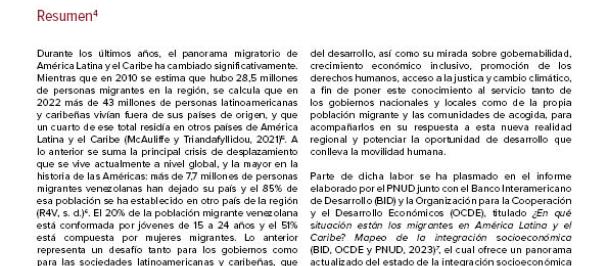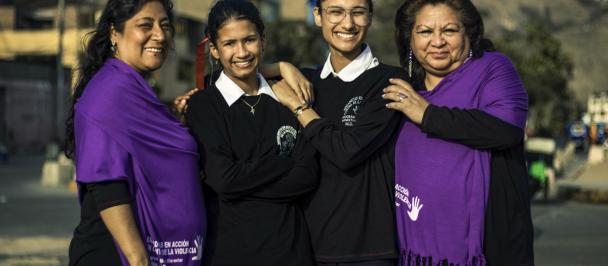Migration in Latin America and the Caribbean has rapidly changed over the last decade. Between 2010 and 2019, the number of immigrants in the region increased by 66 percent, while the number of emigrants went up 26 percent. Some 42.7 million people live out of their countries of birth. This is mainly due to Venezuelan migration, which is here to stay.
At the end of 2019, there was an estimated 4.8 million Venezuelan migrants, including refugees and asylum seekers. About 85 percent of those who fled the economic, social and policy failures in Venezuela have moved within the region. Colombia, which shares a long border with Venezuela, is hosting the most—about 1.6 million.
But Venezuela is not the only reason why migration changing. The northern triangle of Central America faces growing numbers of people of the move, as a result of poverty and violence. Since 2014, an estimated 265,000 transit migrants, from El Salvador, Guatemala and Honduras, have set out for the United States every year. A growing number of them are unaccompanied women and children. According to estimates, only one out of five succeed. The other 80 percent are stopped by Mexican or United States authorities. Growing numbers of stranded migrants also generate tensions in local communities.
Migrants contribute to development
Countries of transit and destination tend to see migrants as a burden. However, the international experience shows that immigrants, including refugees, also contribute to the development of their host countries. But harnessing the development potential of migration requires that public authorities promote migrants’ socioeconomic integration as well as social cohesion.
At a time when the potential adverse impact of immigration is a concern for many countries, we need to ensure migration supports development. The Colombian government, with the support of UNDP, has designed an income generation strategy for migrants from Venezuela and host communities. The strategy encourages investment in training and education programmes to help migrants find suitable jobs.
Socioeconomic integration policies also need to come with dedicated measures to promote civic coexistence. On the one hand, host countries need to protect migrants’ right. And they must fight actively against all forms of discrimination and forced labour. Several countries have carried out public awareness campaigns about why people had to leave their countries and how they positively contribute to host communities. To avoid resentment and xenophobia, native-born populations need to see the direct benefits of immigration. This implies that cash and in-kind programmes designed to support migrants include vulnerable host communities and that investment programmes contribute to developing public services and infrastructure to deal with rapid population increases.
Regional challenges
The Global Forum on Migration and Development Summit, held in Quito in January, has made the international community more aware of the migration and development challenges in the region. It recognized that besides humanitarian aid, migration is a development issue and that countries need to invest in income generation programmes to enable migrants, including refugees and asylum seekers, to integrate into their host countries’ labour markets. They also require massive investments in infrastructure and local development to help create jobs that can absorb both migrant and host populations. But, because this implies financial resources that most countries in the region do not have, international cooperation needs to increase its support to help them turn migration into an opportunity for development.
Migration is on the rise. For countries that choose to host migrants in productive and inclusive manners it presents development and governance opportunities. UNDP, with its Regional Centre for Latin America and the Caribbean and its 26 country offices, stands ready to support national and local authorities

 Locations
Locations


